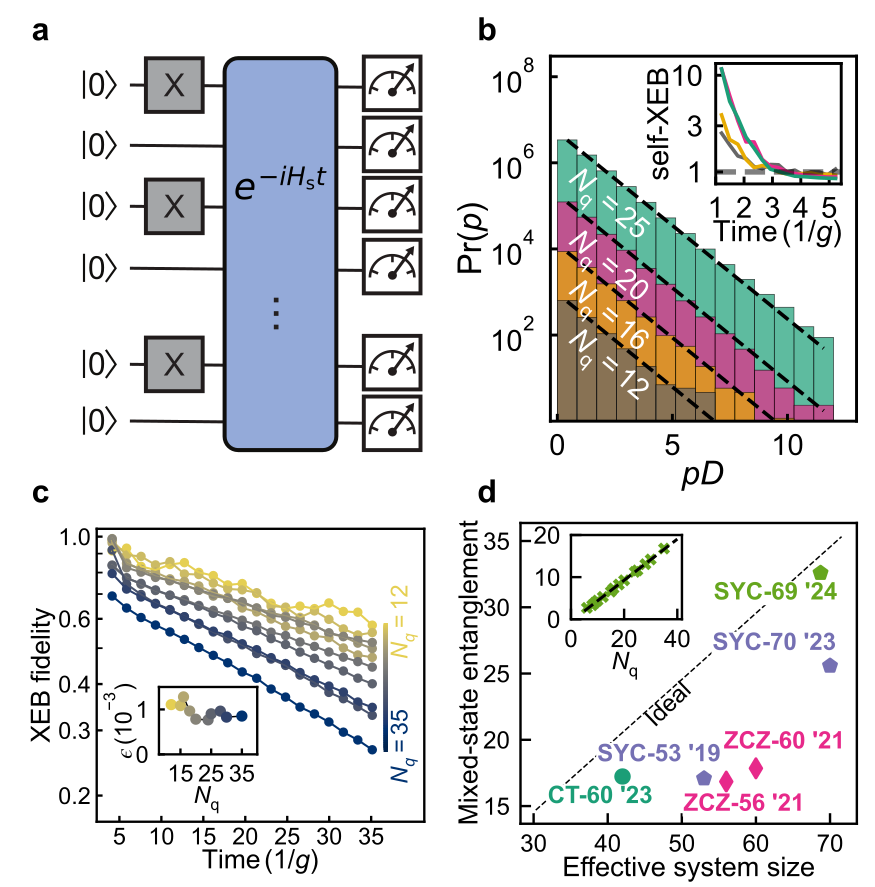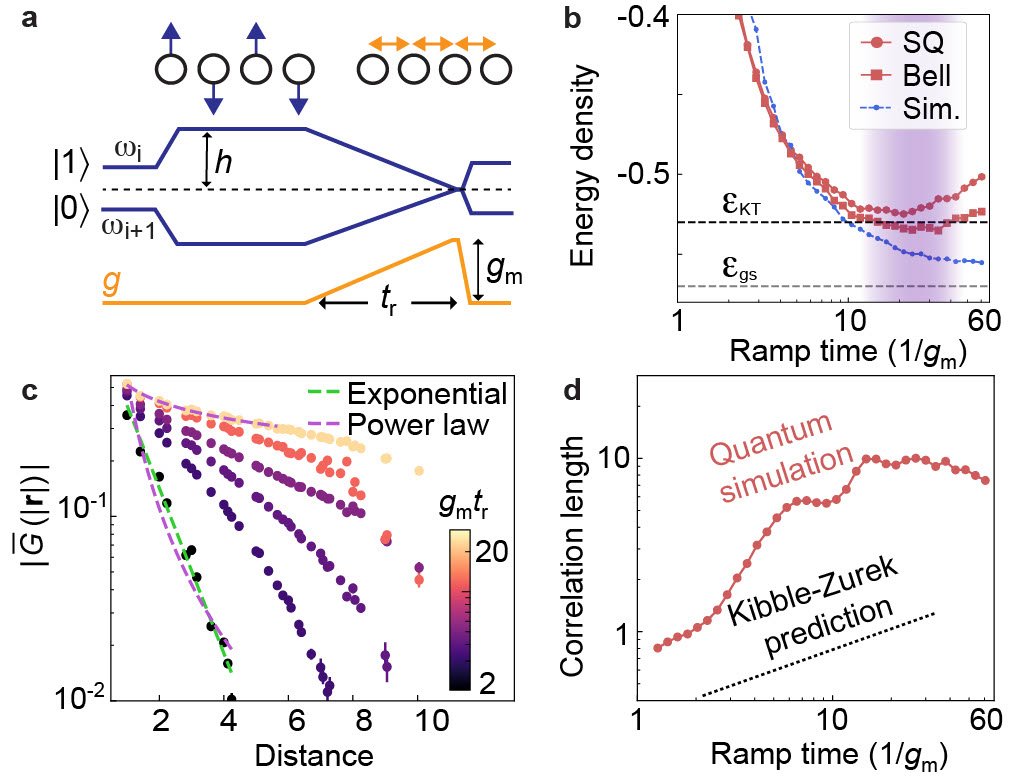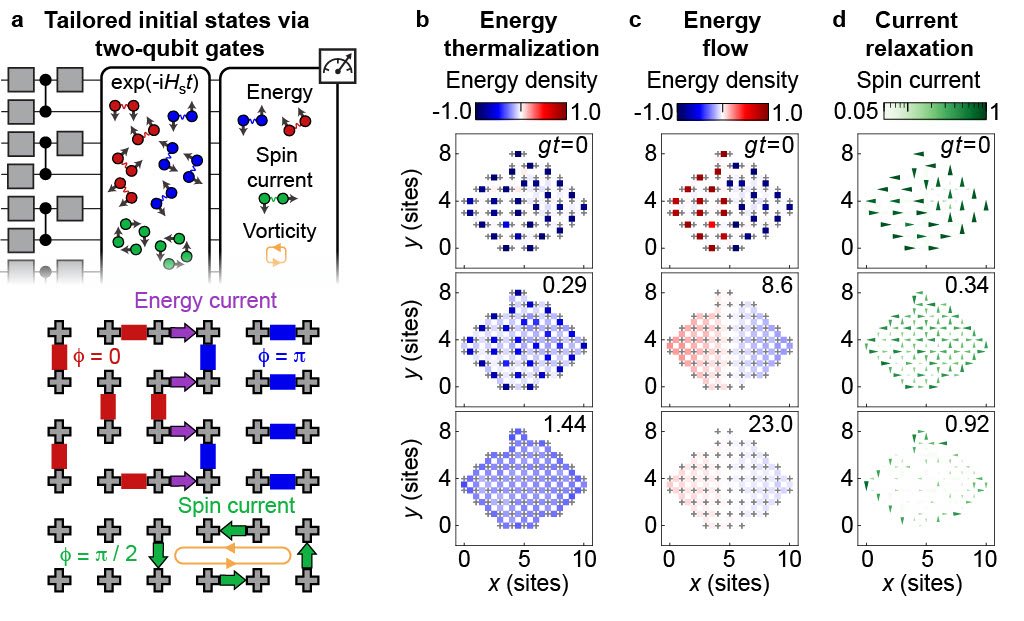A New Hybrid Platform for Quantum Simulation of Magnetism

A New Hybrid Platform for Quantum Simulation of Magnetism
Google Quantum AI has developed a novel hybrid approach to quantum simulation, combining analog and digital techniques to achieve both flexibility and speed. This advancement allows for the simulation of complex physical systems that are beyond the reach of even the most powerful classical computers.
The Challenge of Quantum Simulation
Quantum simulation aims to model physical systems too complex for classical computers. Two key features are essential:
- Flexibility: The ability to target a wide range of problems.
- Speed: The ability to simulate dynamics quickly to capture quantum states before noise degrades them.
The Hybrid Approach: Analog + Digital
Quantum computers can simulate systems in two main ways:
- Digital Quantum Simulation: This method breaks down the simulation into many small, discrete operations (logical gates) applied sequentially. It offers great flexibility but is relatively slow, as qubits typically interact only with their immediate neighbors.
- Analog Quantum Simulation: This approach directly simulates the continuous dynamics of a system by activating all interactions (couplers) in parallel. This mimics real-world physics more closely and enables faster growth of quantum entanglement, a crucial resource for quantum computing. However, analog simulation is generally less flexible.
The hybrid approach combines the strengths of both: the flexibility of digital methods with the speed and efficient entanglement growth of analog simulation.
Overcoming Calibration Challenges
A major hurdle in implementing hybrid quantum simulation on superconducting hardware is the precise calibration of the analog component. Unlike digital simulations, where individual operations are calibrated, analog simulation involves simultaneous interactions that interfere with each other.
Google's team developed a new calibration scheme that uses a set of carefully selected calibration experiments combined with highly precise modeling of the underlying hardware. This allows for analog simulations with accuracy comparable to digital simulations.
Benchmarking with Random Circuit Sampling
The team benchmarked their new analog calibration technique using random circuit sampling. They evolved the system into a chaotic quantum state (a superposition of all possible bit sequences) and measured the distribution of these sequences.
- Key Insights:
- The analog simulator reached the chaotic state very quickly, enabling access to highly entangled quantum states with minimal noise.
- The measured distribution closely matched theoretical predictions, demonstrating high precision in the analog simulation (an error rate of only 0.1% per qubit interaction).
- Performance: This hybrid approach is significantly faster and more accurate than classical simulations. It's estimated that simulating this benchmark experiment with the same accuracy on the Frontier supercomputer would take over a million years.
 High-accuracy analog performance beyond the reach of classical computers.
High-accuracy analog performance beyond the reach of classical computers.
Simulating a Quantum Magnet
The hybrid approach was then used to study a quantum magnet, where qubits represent magnetic spins. The goal was to understand how the magnet's behavior changes as interactions are ramped up at different rates.
- Methodology:
- Digital Preparation: Qubits were initialized in an alternating pattern (1s and 0s, representing spins up and down).
- Analog Evolution: Interactions between spins were ramped up at varying rates.
- Digital Measurement: The final state was characterized.
- Observations:
- Slow Ramps: Led to spins aligning in the horizontal plane, achieving a very low simulated temperature.
- Kosterlitz-Thouless Transition: The researchers observed this phenomenon, a sudden change in spin alignment akin to water freezing. This transition is crucial for understanding low-temperature states.
- Versatility: The hybrid approach allowed for versatile probing of the transition, including characteristic behaviors not possible with purely analog methods.
 New scientific discovery in simulations of a quantum magnet.
New scientific discovery in simulations of a quantum magnet.
New Discovery: Breakdown of the Kibble-Zurek Mechanism
While many findings aligned with existing theories, the team observed a surprising deviation from the Kibble-Zurek mechanism. This theory predicts how spin alignment changes with ramp rate.
- The Discrepancy: The experiment showed that the measured spin alignment differed significantly from the Kibble-Zurek prediction. Instead of spins getting "stuck" in small, independently aligned patches, these patches were observed to merge.
- Implication: This discovery suggests the Kibble-Zurek mechanism is not as universally applicable as previously thought and provides new insights into preparing low-temperature states.
Three Experiments in One with the Hybrid Approach
The team further demonstrated the flexibility of the hybrid approach by using two-qubit digital gates to prepare more complex initial states. This enabled three distinct experiments:
- Merging Patches: Preparing local patches of low temperature and observing how they merged.
- Equilibration: Simulating the mixing of a hot region with a cold region.
- Spin Currents: Studying the relaxation of a flowing current of spins.
This showcases the power of flexible initial state preparation for accessing a wide range of physical phenomena.
 Three-in-one experiment with customizable initial states.
Three-in-one experiment with customizable initial states.
Conclusion
Google's new hybrid quantum simulation platform, powered by an advanced calibration scheme, represents a significant leap forward. It combines the flexibility of digital quantum computing with the speed of analog simulation, enabling scientific discoveries previously out of reach. This approach is being utilized on Google's Sycamore and new Willow quantum chips, promising further advancements in magnetism and beyond.
Labels:
- Quantum
- Machine Learning
- AI
- Physics
- Simulation
Quick Links:
Other posts of interest:
Follow us:
About Google | Google Products | Privacy | Terms | Help
Original article available at: https://research.google/blog/a-new-hybrid-platform-for-quantum-simulation-of-magnetism/